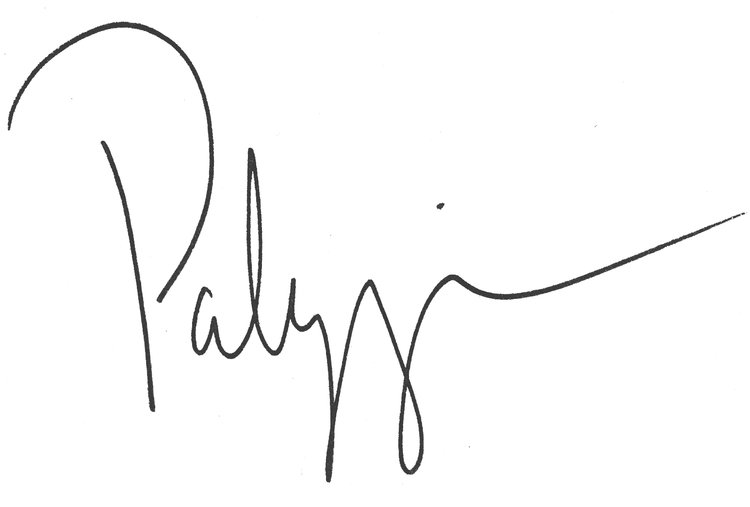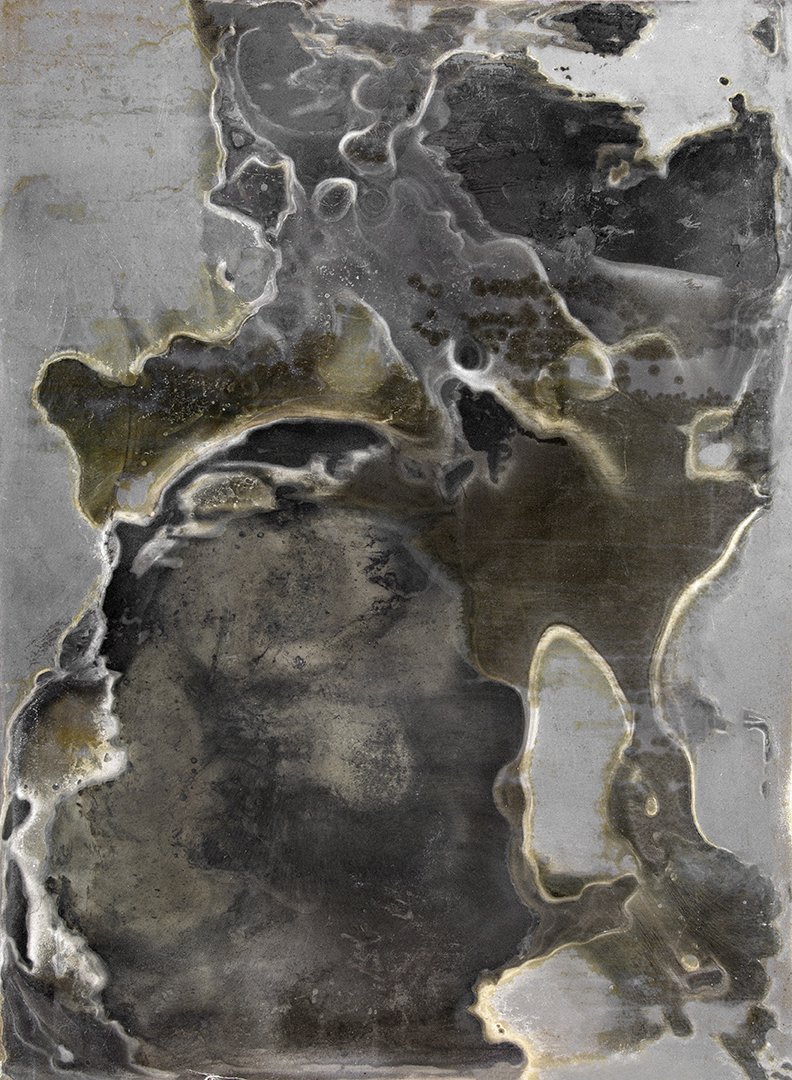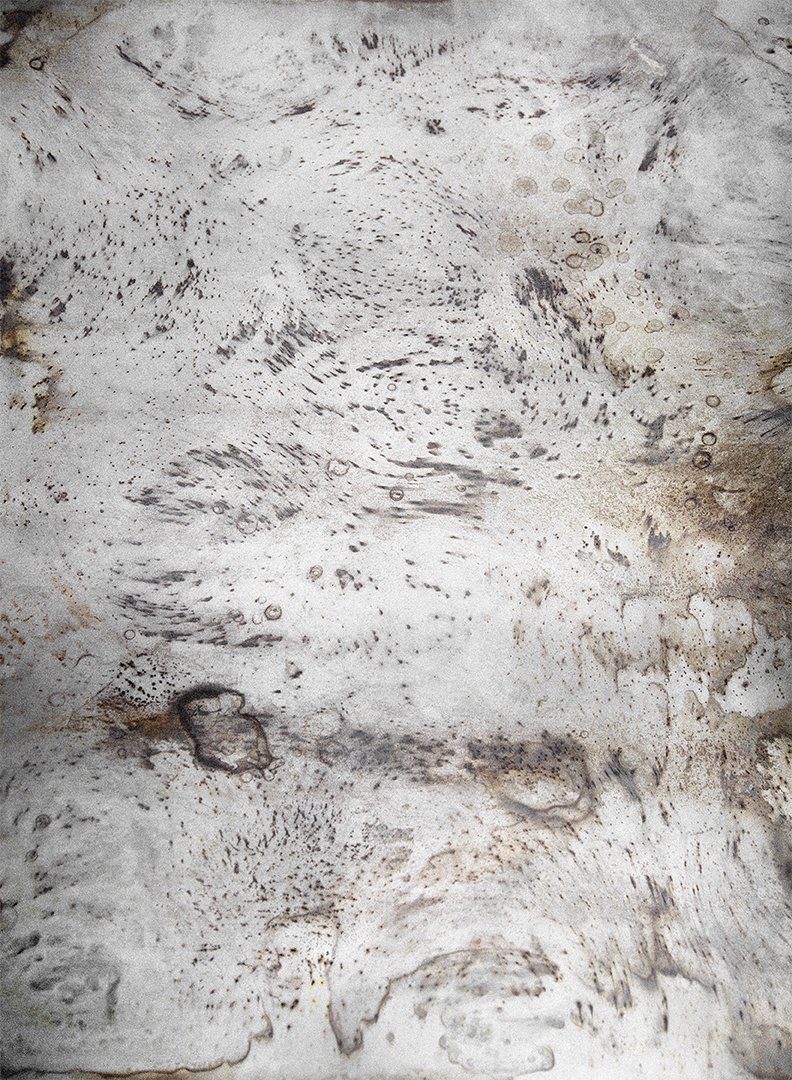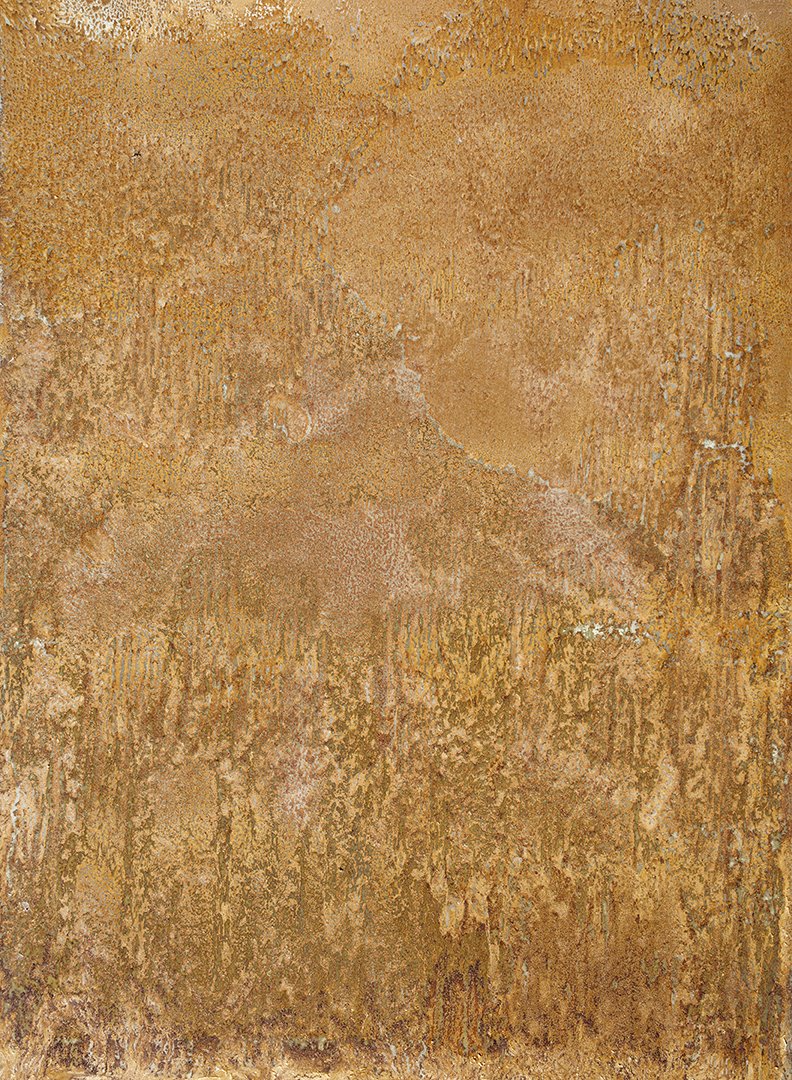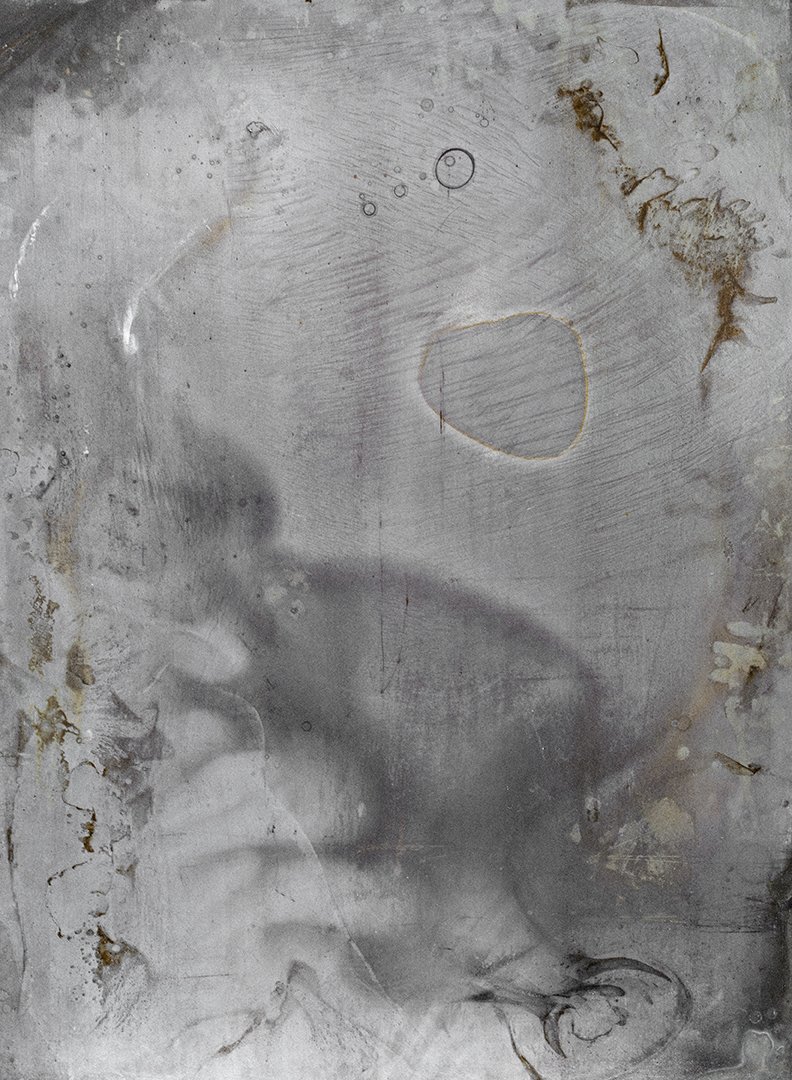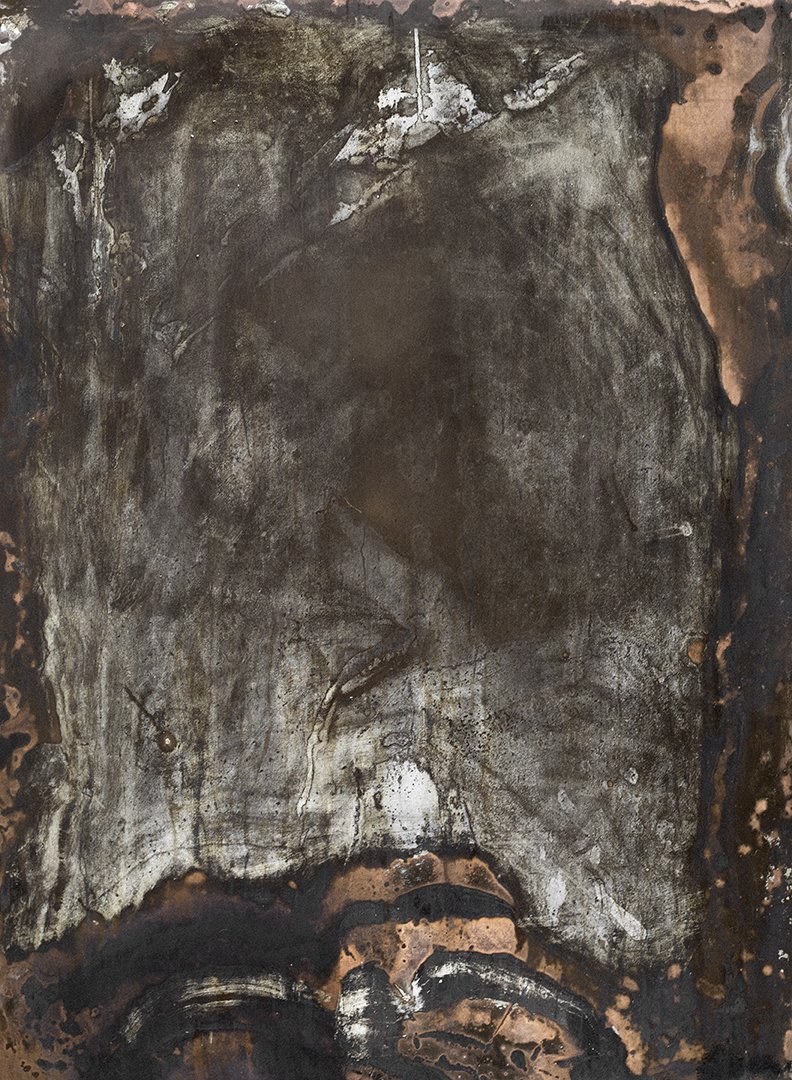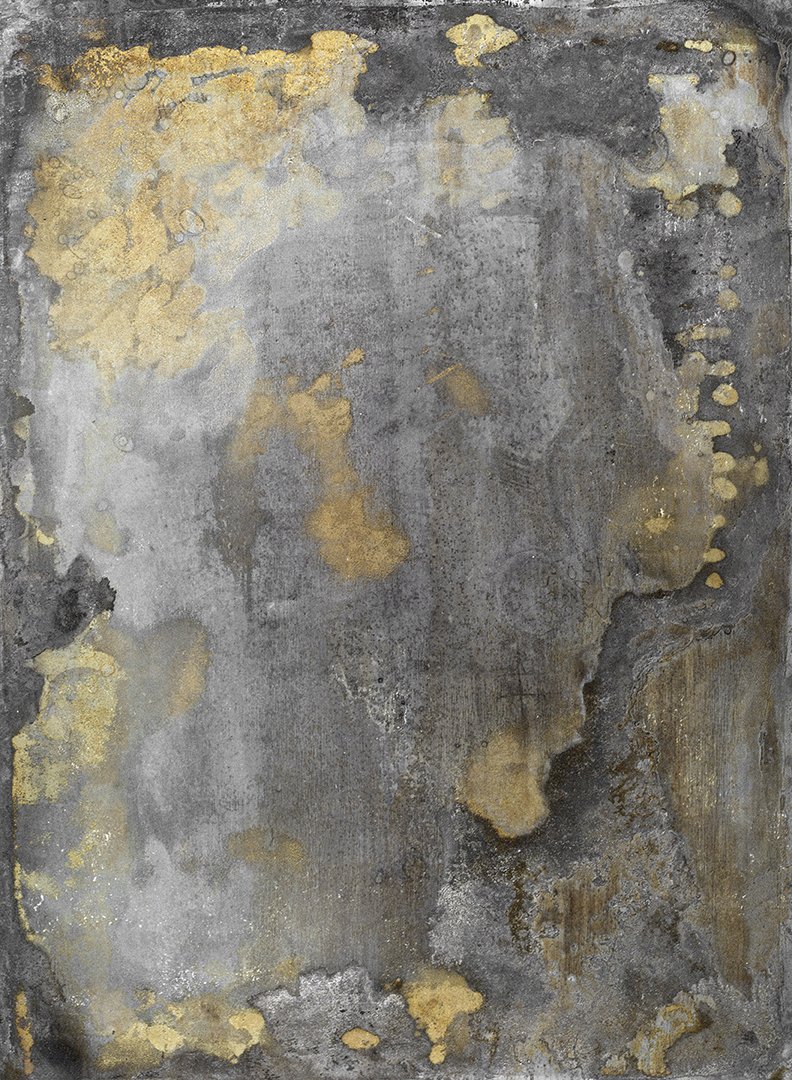THE GREAT WORK
Alchemy sought to transform base metals into gold and was the foundation of early science. Though it declined post-Renaissance, its influence shaped modern chemistry. Like alchemy, art transforms materials into something greater. In The great work, Paluzzi explores this idea through seven metallic pieces representing the seven classical stages of transmutation. Each steel plate undergoes a chemical process, layering metals using alchemical recipes. Plates are cleansed in a salt bath, then stained with silver, iron, copper, and gold. Agitation shapes unique patterns, with reactions taking minutes to days. Once complete, each plate is dried and varnished to preserve its form.
The great work plates
Steel with silver, iron, copper, and/or gold
29 x 39 in
Edition of 1
2020
